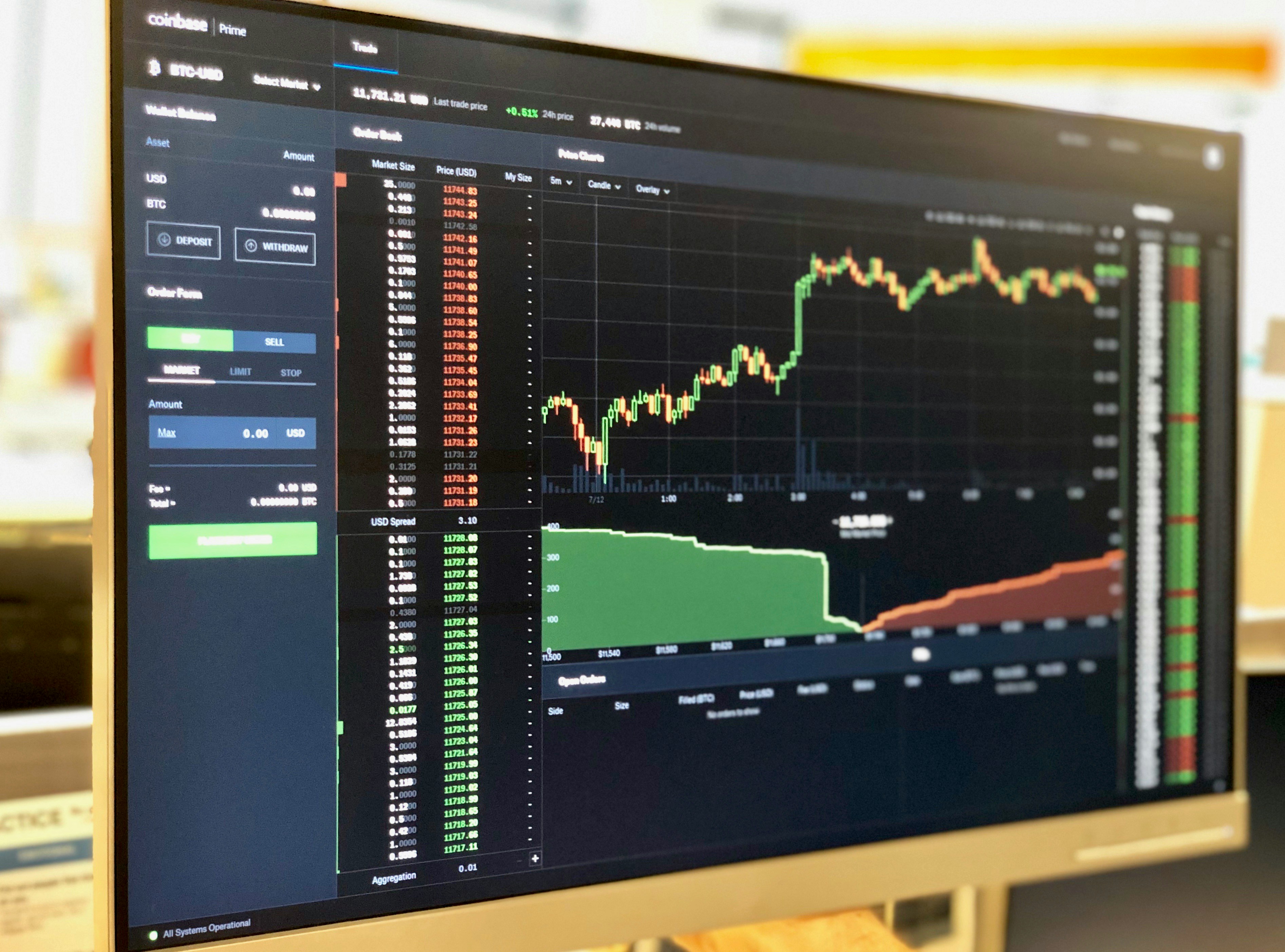
Introduction to Ethereum and Its Market Trends
Ethereum, introduced in 2015, is a decentralized, open-source blockchain that enables developers to build and deploy smart contracts and decentralized applications (dApps). As the second-largest cryptocurrency by market capitalization, it plays a crucial role in the blockchain ecosystem, attracting significant interest from investors, developers, and industries alike. Ethereum’s unique capabilities, primarily powered by its native cryptocurrency, Ether (ETH), allow for a vast array of applications, ranging from finance to supply chain and beyond.
The price of Ethereum is influenced by various market trends that reflect the asset’s perceived value and potential for growth. One key aspect driving price movements is market sentiment, which can be significantly swayed by social media trends, news coverage, and investor psychology. Positive news regarding technological advancements, such as the transition to Ethereum 2.0 and its associated scalability improvements, can bolster investor confidence, ultimately leading to price increases. Conversely, negative news, particularly regarding security vulnerabilities or regulatory crackdowns, can create an atmosphere of fear, causing prices to drop.
Moreover, regulatory developments are of paramount importance in shaping Ethereum’s market landscape. Governments around the world are contemplating frameworks to regulate cryptocurrencies more strictly, which can directly affect investment flows and Ethereum’s valuation. Macroeconomic factors, such as inflation rates, interest rates, and overall economic stability, also play a significant role in determining investor behavior and risk appetite in cryptocurrency markets. The Ethereum price prediction and analysis for April 22, 2025, will take these various elements into account, providing insights into how they can impact the future price trajectory of Ether.
Current Economic Environment Affecting Ethereum
The economic landscape is a crucial determinant of the cryptocurrency market, including Ethereum. As we approach April 22, 2025, various economic factors are poised to influence the ethereum price prediction and analysis. One of the primary contributors is the inflation rate, which has been a significant concern for economies globally. Rising inflation often leads to increased investor interest in cryptocurrencies as a hedge against declining fiat currency value. Consequently, should inflation rates continue to soar, it is likely that more investors will flock to Ethereum, thereby potentially driving up its price.
Another critical component to consider is the interest rate policies of central banks. In an effort to control inflation, central banks may decide to either increase interest rates or maintain a cautious approach to monetary policy. If rates rise considerably, traditional investments may become more appealing, potentially leading to a reduction in capital flowing into cryptocurrencies, including Ethereum. Conversely, if central banks remain accommodative, it could favor cryptocurrency investments, resulting in bullish trends for ethereum price predictions.
Additionally, the growing acceptance and integration of cryptocurrencies into mainstream financial systems play a pivotal role in shaping investor sentiment. Regulatory clarity and advancements in blockchain technology could enhance Ethereum’s scalability and security, boosting its adoption rates. Furthermore, favourable global economic conditions can create a conducive environment for the cryptocurrency market, fostering further interest in Ethereum. Therefore, monitoring developments in economic policies and market conditions is vital as we approach April 22, 2025, to facilitate more accurate ethereum price prediction and analysis.
Technological Developments in Ethereum 2.0 and Beyond
The Ethereum network has been at the forefront of blockchain technology since its inception, with its evolution taking a significant leap forward with the introduction of Ethereum 2.0. This transition from a Proof of Work (PoW) to a Proof of Stake (PoS) consensus mechanism represents a paradigm shift, aiming to enhance scalability, security, and energy efficiency. The anticipated changes are expected to play a crucial role in the ethereum price prediction and analysis for April 22, 2025.
One of the key advancements with Ethereum 2.0 is the implementation of sharding. This scalability technique allows the network to process multiple transactions simultaneously by dividing the data into smaller pieces, known as shards. As a result, the overall capacity of the Ethereum blockchain increases, making it capable of handling a much larger volume of transactions. This feature directly addresses the concerns of network congestion, which have previously affected transaction speeds and costs, impacting investor sentiment and potentially the price of Ethereum in the future.
Another groundbreaking development is the shift to the Proof of Stake mechanism, which drastically reduces energy consumption compared to its predecessor. This shift not only benefits the environment but also enhances the overall security of the Ethereum network. With validators staking their Ether to secure the network rather than participating in energy-intensive mining, it creates a more efficient economic model, potentially increasing demand for Ether as more investors view it as a sustainable investment asset. These enhancements in energy efficiency may further contribute to a positive ethereum price prediction as we approach April 2025.
In conclusion, the technological advancements encapsulated within Ethereum 2.0 and subsequent upgrades are expected to have far-reaching implications for the Ethereum network. By addressing key issues surrounding scalability and energy efficiency, the enhancements are set to attract a broader user base and positively influence the price trajectory of Ethereum by April 22, 2025.
Market Sentiment and Investor Behavior
The cryptocurrency market is profoundly influenced by the psychological tendencies and emotions of investors. As we approach April 22, 2025, understanding the underlying sentiment surrounding Ethereum becomes increasingly crucial for predicting its price movements. The dynamics of market sentiment can be both subtle and overt, significantly affecting trading patterns. Typically, bullish or bearish trends emerge as a response to various factors including social media discourse, expert analyses, and macroeconomic indicators.
Investor sentiment often manifests through social media platforms, where discussions around Ethereum intensify as key dates approach. For instance, the prevalence of bullish remarks or projections can lead to an uptick in positive sentiment, luring in more investors and potentially driving Ethereum prices higher. Additionally, sentiment analysis tools that gauge public opinions on platforms like Twitter or Reddit reveal trends and shifts in investor behavior that are invaluable for our prediction for April 2025. Thus, monitoring these conversations helps predict whether confidence in Ethereum will swell or wane as the date draws near.
Expert opinions play an equally pivotal role in shaping market sentiment. Analysis from renowned financial analysts or cryptocurrency experts can either bolster investor confidence or instigate concerns. If reputable sources publish favorable projections for Ethereum price prediction and analysis for April 22, 2025, it could encourage more investors to enter the market. Conversely, negative analyses can trigger fear and lead to a sell-off, resulting in decreased prices.
As we analyze Ethereum’s potential movements, it is essential to consider how collective investor behavior impacts trading patterns. The intertwining of social sentiment, expert insights, and investor psychology forms a complex fabric that will likely leave its mark on Ethereum’s price trajectory as April 2025 approaches.
Historical Price Analysis of Ethereum
The historical price trends of Ethereum have showcased significant volatility, characterized by remarkable surges and corrections that provide insights into its future performance. Since its inception in 2015, Ethereum’s price has navigated through various phases, influenced by market sentiment, technological advancements, and regulatory developments. Notably, the price reached its all-time high of approximately $4,800 in November 2021, fueled by a surge in decentralized finance (DeFi) projects and non-fungible tokens (NFTs), catalyzing a broader interest in the cryptocurrency space.
Post-2021, Ethereum experienced notable price corrections, with fluctuations attributed to market overreactions, macroeconomic factors, and the transition concerns related to Ethereum 2.0. By mid-2023, Ethereum demonstrated periods of recovery, trading consistently within a range of $1,500 to $2,500, effectively establishing critical support and resistance levels. Historical analysis reveals that Ethereum tends to consolidate after a major bullish run, allowing the market to absorb prior gains before setting the stage for another potential rally. Key price levels, identified through previous resistance points, often signal important re-entry or exit opportunities for investors.
As we look forward to April 22, 2025, aligning historical movements with current indicators suggests potential scenarios for Ethereum’s trajectory. Factors such as increasing adoption by institutional investors, enhancements in blockchain technology, and shifts in regulatory frameworks will likely influence price dynamics. By employing technical analysis on historical data and considering past surge patterns, one can postulate an educated ethereum price prediction for the mentioned date. A reassessment of key price levels around the mid-range mentioned could indicate a potential return to bullish momentum if market conditions remain favorable.
Comparative Analysis with Other Cryptocurrencies
The cryptocurrency market is characterized by its rapid fluctuations and competing forces, leading to varied price predictions among the leading digital assets. As of April 22, 2025, Ethereum’s price prediction and analysis must take into account not only its individual performance but also its position relative to other major cryptocurrencies, most notably Bitcoin and various altcoins. Bitcoin, known as the pioneer cryptocurrency, maintains a significant market cap that often sets the benchmark for others. Its dominance tends to overshadow emerging cryptocurrencies, impacting investor sentiment across the board.
The market capitalization of Ethereum has consistently placed it second to Bitcoin, creating a competitive dynamic between the two. Bitcoin’s established infrastructure and widespread adoption contribute to its resilience, whereas Ethereum’s unique smart contract functionality opens avenues for decentralized applications (dApps). This differentiates Ethereum and positions it advantageously for growth, particularly if the demand for dApps increases. As a result, Ethereum’s price prediction for April 2025 will likely reflect both the influence of Bitcoin’s market movements and its own adoption rates in the evolving landscape of digital currency.
Moreover, the performance of altcoins can also sway Ethereum’s outlook. Some altcoins aim to provide enhanced functionalities or lower transaction costs, potentially attracting investors away from Ethereum. However, Ethereum’s established network and developer community provide considerable competitive advantages that can safeguard its market position. The inter-cryptocurrency competition shapes the overall landscape, leading to fluctuations that cannot be overlooked when making predictions. Therefore, any analysis of Ethereum’s price prediction and market behavior for April 2025 must consider these interdependencies and competitive pressures from both Bitcoin and altcoins.
Expert Predictions for Ethereum’s Price
As we analyze the future of Ethereum and its potential price trajectory leading to April 22, 2025, it is imperative to consider insights from a diverse array of experts within the cryptocurrency landscape. Various cryptocurrency analysts, financial institutions, and market influencers have shared their predictions, presenting a multi-faceted view of what the Ethereum price may look like in the near future.
Optimistically, certain analysts forecast that Ethereum could see significant gains by April 2025. This perspective is largely grounded in Ethereum’s continued enhancements to its blockchain technology and the growing adoption of decentralized applications (dApps) utilizing its platform. Experts suggest that if the upgrade to Ethereum 2.0 progresses successfully and issues relating to network scalability and transaction speed are addressed, the Ethereum price could surge past previous all-time highs, with estimates ranging between $5,000 to $7,000.
In a neutral scenario, analysts anticipate moderate price appreciation for Ethereum, positioning its value in a stable range. These predictions often factor in the broader market trends, regulatory developments, and Ethereum’s ability to maintain its user base amid increased competition from emerging blockchain technologies. Predictions under this outlook suggest that Ethereum may reach a price between $3,000 to $4,500 by April 2025, reflecting consistent growth while still being cautious of market volatility.
Conversely, a more bearish viewpoint highlights the risks that could impede Ethereum’s price momentum. Experts in this camp warn of potential regulatory crackdowns, security concerns, or a broader market downturn that could affect the entire cryptocurrency ecosystem. They predict that in unfavorable conditions, the Ethereum price could dip, possibly ranging from $1,500 to $2,500.
These divergent predictions for Ethereum’s price leading to April 22, 2025, underscore the varying factors at play and the inherent uncertainties of the cryptocurrency market. A thorough analysis of these expert forecasts is essential for investors considering their positions in Ethereum amidst an ever-evolving financial landscape.
Potential Challenges and Risks Ahead
As the date of April 22, 2025, approaches, various challenges and risks could significantly impact the Ethereum price prediction and analysis for that time. One of the primary concerns relates to regulatory hurdles that cryptocurrencies, including Ethereum, might face across different jurisdictions. Governments worldwide have been increasingly focused on establishing clear regulations for cryptocurrencies, which could bring both positive and negative implications. For Ethereum, tighter regulations may limit trading and stifle innovation, affecting overall market confidence and, consequently, its price.
In addition to regulatory challenges, Ethereum also faces intense competitive pressures from alternative cryptocurrencies. Popular alternatives like Binance Smart Chain, Cardano, and Solana have been gaining traction due to their unique features and scalability solutions. These competitors pose a real threat to Ethereum’s market dominance. If these projects continue to improve their functionalities, Ethereum could experience a drop in its user base and transaction volume, leading to a negative impact on its price outlook.
Furthermore, technical challenges within Ethereum’s network can have long-standing effects on its performance and stability. Issues associated with scalability, transaction speed, and network congestion have been recurring challenges for Ethereum. While ongoing developments such as Ethereum 2.0 aim to address these problems, any critical delays or failures in implementation could lead to investor skepticism, volatility, and a corresponding decline in prices.
By understanding these potential challenges, users and investors can better prepare for fluctuations in the Ethereum price prediction and analysis for April 22, 2025. Proactive consideration of regulatory landscapes, competition, and network reliability will be key to navigating the evolving cryptocurrency market effectively.
Conclusion and Final Thoughts
In light of our analysis regarding the ethereum price prediction and analysis for April 22, 2025, several key elements have emerged that are pivotal for investors and market watchers. The trajectory of Ethereum’s price will likely be influenced by various factors, including technological advancements, regulatory developments, market sentiment, and macroeconomic conditions. As Ethereum continues to evolve, particularly with upgrades like Ethereum 2.0 and its transition to proof-of-stake, these developments may yield significant implications for its valuation.
Furthermore, it is essential to consider how the broader cryptocurrency market may respond to these changes. Ethereum’s performance often serves as a barometer for the overall health of the digital asset ecosystem. Investor confidence tends to fluctuate in correlation with Ethereum’s price movements, which can ripple through the market and affect other cryptocurrencies. Therefore, monitoring market conditions and staying informed about key developments leading up to April 2025 will be crucial for those looking to navigate the volatility associated with Ethereum and other assets in the space.
Additionally, understanding the various external influences, such as regulatory actions or global economic trends, will provide investors with a comprehensive framework to evaluate their positions and strategies effectively. As we approach the predicted date, it will be imperative to continually assess the evolving situation in the cryptocurrency landscape to make informed decisions based on the latest insights. The potential price growth or contraction for Ethereum will hinge on these dynamics, making vigilance a vital component of any investment strategy.



















